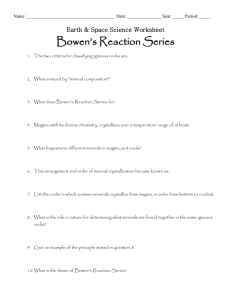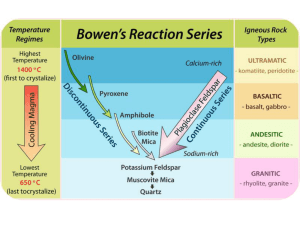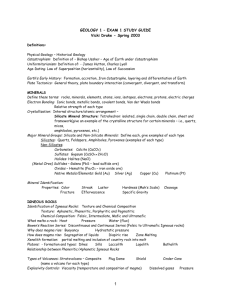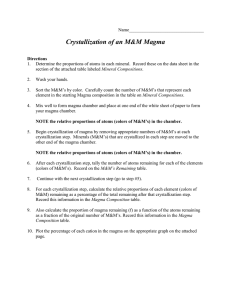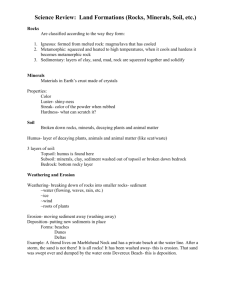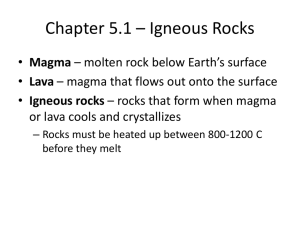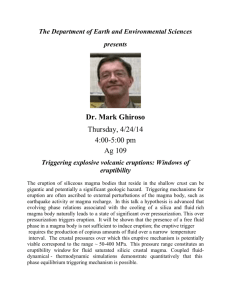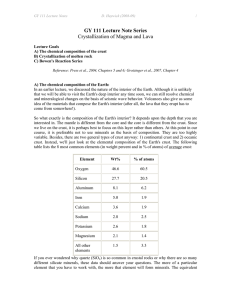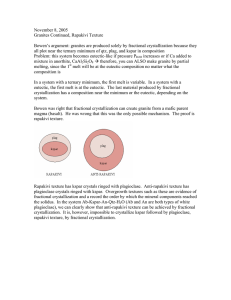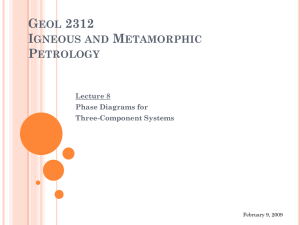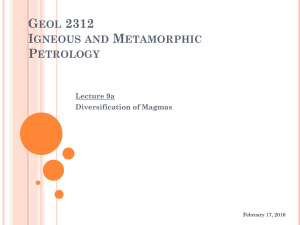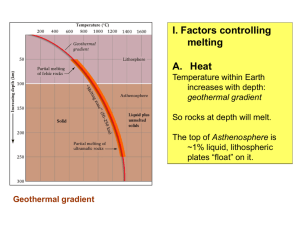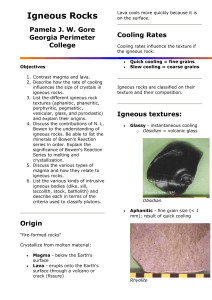Bowen's Reaction Series (page 48 – 49)
advertisement
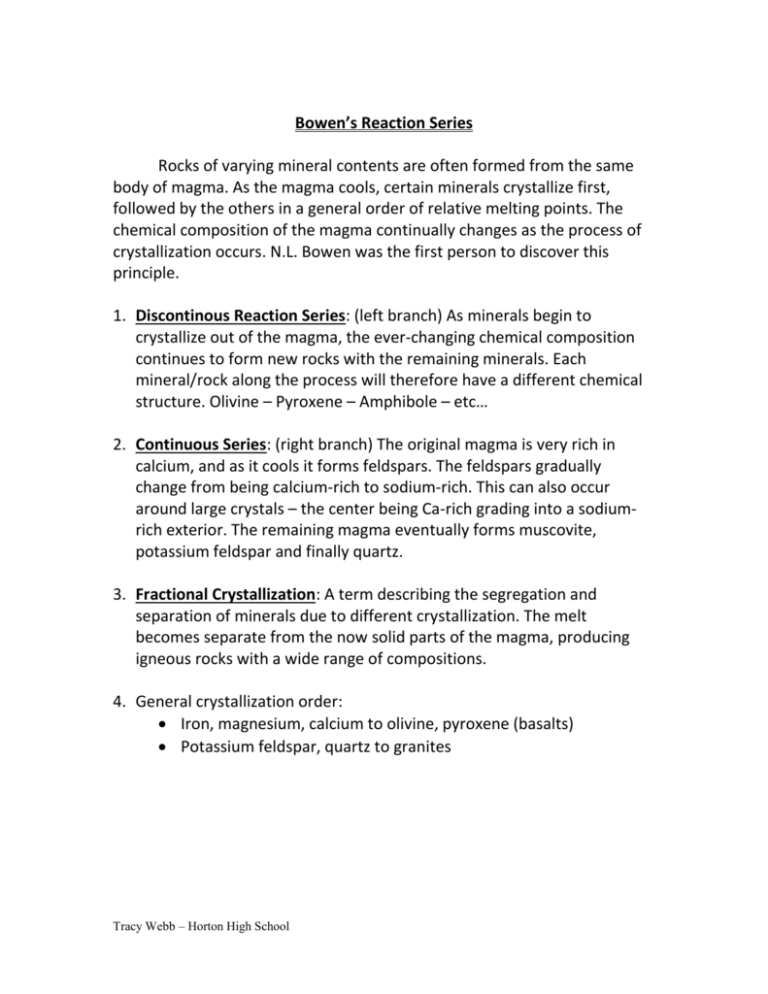
Bowen’s Reaction Series Rocks of varying mineral contents are often formed from the same body of magma. As the magma cools, certain minerals crystallize first, followed by the others in a general order of relative melting points. The chemical composition of the magma continually changes as the process of crystallization occurs. N.L. Bowen was the first person to discover this principle. 1. Discontinous Reaction Series: (left branch) As minerals begin to crystallize out of the magma, the ever-changing chemical composition continues to form new rocks with the remaining minerals. Each mineral/rock along the process will therefore have a different chemical structure. Olivine – Pyroxene – Amphibole – etc… 2. Continuous Series: (right branch) The original magma is very rich in calcium, and as it cools it forms feldspars. The feldspars gradually change from being calcium-rich to sodium-rich. This can also occur around large crystals – the center being Ca-rich grading into a sodiumrich exterior. The remaining magma eventually forms muscovite, potassium feldspar and finally quartz. 3. Fractional Crystallization: A term describing the segregation and separation of minerals due to different crystallization. The melt becomes separate from the now solid parts of the magma, producing igneous rocks with a wide range of compositions. 4. General crystallization order: Iron, magnesium, calcium to olivine, pyroxene (basalts) Potassium feldspar, quartz to granites Tracy Webb – Horton High School
